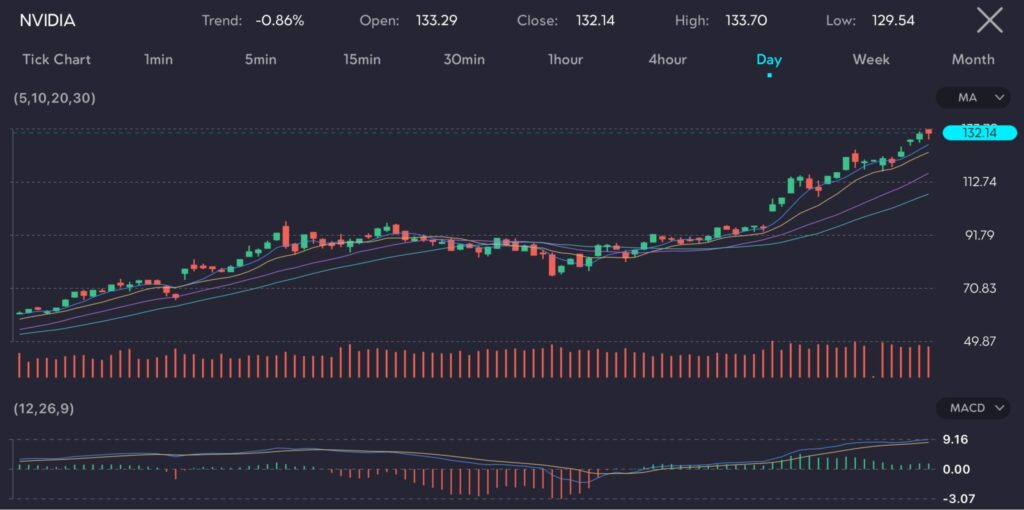Key points:
- Stock price of Nvidia appreciated over 140% in 2024, crossing a $3 trillion market cap.
- The price movement is displaying the pattern of a “bubble-ish territory”
This article is a follow-up to: Nvidia soars to record highs
Nvidia (Symbol: NVDA) has experienced a phenomenal rise in 2024, with its stock price soaring over 140% and its market capitalisation surpassing $3 trillion.
This performance has positioned Nvidia as a key player in the artificial intelligence (AI) and semiconductor markets. However, such price momentum raises cautionary flags about the current valuation of Nvidia.

Images above show the NVIDIA rally, as observed on the VT Markets app.
About the stellar performance of Nvidia
The success of Nvidia has been driven by its leadership in AI hardware and software solutions. The GPUs of Nvidia are critical for AI applications, leading to stronger demand from major tech firms such as Microsoft (Symbol: MSFT), Tesla (Symbol: TSLA), Google (Symbol: GOOG) and OpenAI.
This strong demand has propelled the stock price to unprecedented heights, marking a milestone for Nvidia.
Warning signs are coming for the bullish momentum
Despite the impressive gains, potential risks are now visible from technical analysis. The stock price of Nvidia is starting to form what looks like a “bubble-ish territory”, where it is easy for market participants to fall into the psychological trap in timing exits perfectly, often resulting in holding onto stocks too long and missing the optimal selling point.
From a broader market context, it is worth noting that while the S&P 500 (Symbol: SP500) has appreciated significantly in 2024, only a small percentage of stocks are contributing to this rally.
Approximately 58% of stocks are in downward trends, and just over 50% are above their 40-week moving averages. This disparity indicates that the overall health of the market may not be as robust as the headline numbers suggest.
How a trader should approach this
Nvidia may continue to see volatility as market participants digest its high valuation and the broader economic context. Profit-taking could lead to short-term pullbacks. The broader market performance, particularly in the semiconductor sector, will likely influence the stock price of Nvidia.
Continued strong demand for AI and tech products could support bullish valuation, but economic uncertainties and market corrections remain potential risks.
With the likelihood of market correction in the picture, traders interested in shorting Nvidia may do so in the form of CFD trading. It would also be useful to include Fibonacci retracement levels to keep the risk level manageable.









